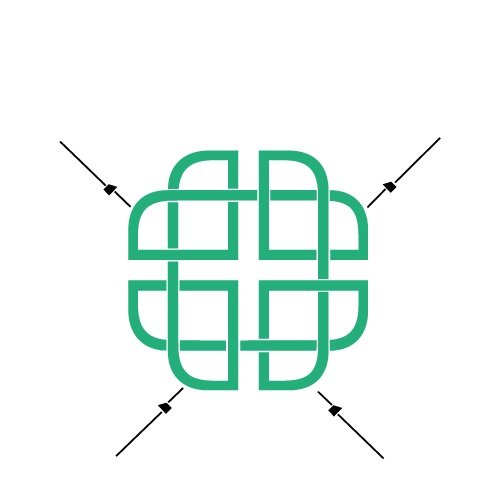There are always RDLs
originally Posted on Wednesday, August 17, 2011 12:06 PM
Lucy: Daddy, when are we going to get my special big hungry treat?
Me: When Ms. Andrea is done her Squats and RDLs.
Lucy: We don't have RDLs tonight.
Greg: Lucy, there are always RDLs
I love the RDL, or Romanian Deadlift. It's a much misunderstood exercise, and often underrated by trainers, athletes, and coaches. After squats and the classic lifts themselves, the RDL is the next tool in the preparation of a lifter. Even in the general population of trainees the RDL is a valuable tool to fix back problems, although I use them with variations in the general population. Beginner to intermediate Weightlifters should use these at least once a week or so; they are a great way to pack mass on your hamstrings and lower back, and they improve your flexibility.
A little RDL history for you: I think, based on the stories I've heard, that the RDL was introduced to America by Nicu Vlad( http://www.youtube.com/watch?v=-qA6_tH-OGs) in the old Sports Palace in San Francisco. Jim Schmitz could probably confirm this story. I've also heard that Dragomir Ciroslan brought them with him when he came to the OTC, but either way, they were used by strong Romanian Dudes to get stronger.
There are many misunderstandings of RDL technique. This video from Catalyst Athletics demonstrates good, proper form: http://www.cathletics.com/exercises/exercise.php?exerciseID=101
The video also has a link to the stiff-legged deadlift; watch both videos to distinguish the exercises.
When doing the RDL, remember to lower the bar by pushing the hips (your butt) back. Don't just bend over; make sure your back STAYS ARCHED the entire time. Go only as deep as you can with the arched back. For some people, this range of motion ends above the knee; for others, it ends well below the knee. I don't think anyone needs to lower the plates below their feet, even if they are extremely flexible. Just go until the plates hit the floor. The second key piece of technique in the RDL is to keep the shoulder blades retracted and the lats flared, just like in good pulling form.
Many people find the RDL difficult to learn. I often start athletes using their hands against their thighs with no weight to get a feeling for the movement, then move to dumbbells or kettlebells, then to the bar. As a Coach, I need to make sure the athlete's back stays arched, and until I can see the arch, I never let people do heavy RDLs.
What, then, is heavy? I always use the Back Squat as the basis for the RDL. For some folks, it's their front squat (usually powerlifters). I don't ever max in the RDL (it isn't an exercise lending itself safely to 100% testing). In fact, I rarely do fewer than five reps in the lift. So, 80-85% of your back squat for a set of 5 in the RDL is heavy; this weight is one you work up to, don't just go into the gym and figure that you can do this the first day. Also, use straps at the beginning, and after a few months only for heavy sets. I use straps when I go over 400 pounds.
The RDL works well because it is an eccentric movement; your body learns quickly through the eccentric range of motion. Also, the isometric contraction required of the traps and rhomboids (and their accompanying musculature) carries over well into the full lifts, and encourages healthy, strong posture in the general population.
Alternatives to the RDL vary in their effectiveness and difficulty. The first alternative to the RDL is the Good Morning. Your body follows the same movement pattern in a GM as in an RDL; the bar is merely placed on top of your shoulders. The bar placement makes this lift difficult for many; I use the Ironmind Buffalo Bar when I GM (http://ironmind-store.com/Buffalo-Bar153/productinfo/1270/), but if you don't have one of these, I would use a regular power bar and hold it in a low bar squat position. Steve Pulcinella of Ironsport Gym in Glenolden, PA did a nice variation on the GM for his Highland Games career: http://www.youtube.com/watch?v=UhQaHTKVbFg. I think throwers benefit from the GM. more than most athletes, and I use it sparingly in my training, and rarely program it in the training of others.
The Single Leg RDL or Deadlift with a Kettlebell is a nice version to use to teach the hip hinge and good position for Olympic Lifting (retreat the hips!). I use this often, even without weight: http://www.youtube.com/watch?v=hWLg7MrA9y4. There are many variations on this exercise, but please only use a kettlebell or dumbbell as loads.
The Band Good Morning is another good exercise to substitute for the RDL, especially as a part of a complex or in higher reps: http://www.youtube.com/watch?v=fTxTFVELEzQ.
Remember, none of these exercises should be done without proper supervision and training, and I'm not telling you to do any of these. This blog is merely my opinion and a few examples of what I do when I train others or myself.
